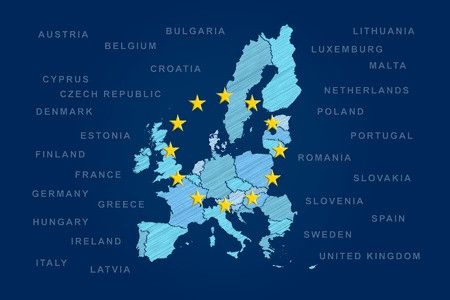Immigration to the EU countries
The EU or the European Union is a political and economic union of several European countries (currently 28 member-states), that includes most of the jusridictions on the continent. The EU has developed in is actively promoting a range of policies aimed towards bringing the member-states together in all respects, as well as making their cooperation easier. These policies include:
- common internal market
- standardised system of laws
- non-restrictive travel area
- common visa policy
- free circulation of goods and services
- free movement of labour
All these and many other advantages are available to any resident of the EU, including citizens and migrants with residence permits, either temporary or permanent.

Additionally, these benefits can also be enjoyed by the family members of said immigrants - the EU has many policies that allow family members to obtain residence permits easier, involving fewer documents and employing simplified procedures.
History
The history of migration in the modern European Union begins with the end of the World War II, and is based on the idea of a unified, borderless Europe. However, this idea or, more loosely, an idea of a European unity, has been present even before that.
Before the end of World War II
The ideas of a united Europe before the 20th century (1949, when the Council of Europe was established, in particular) have been expressed by dynastic unions, empires and country-level unions, who often presented themselves as the "heart of Europe", the ones who embodied the political essence of the continent. The notable examples of such entities would be the Holy Roman Empire, the Polish-Lithuaniuan Commonwealth and the Austro-Hungarian Empire.
 Notably, some thinkers have also expressed the idea of Europe being united not under the banner of a specific country, kingdom, etc., but as a sovereign power in itself. Thus, for example, a German cartographer Sebastian Münster in his 1570 work "Cosmographia" presented a painting named "Europa regina" or "Queen Europe". In this painting, the countries of Europe are depicted borderless and united into a single entity, whose borders roughly corresponded to the borders of Europe the continent.
Notably, some thinkers have also expressed the idea of Europe being united not under the banner of a specific country, kingdom, etc., but as a sovereign power in itself. Thus, for example, a German cartographer Sebastian Münster in his 1570 work "Cosmographia" presented a painting named "Europa regina" or "Queen Europe". In this painting, the countries of Europe are depicted borderless and united into a single entity, whose borders roughly corresponded to the borders of Europe the continent.
1945 to 1993
After the World War II saw a major devastation of European countries and massive casualties amongst their residents, the countries involved have started voicing a more specific idea of European unity. During the following decades, a number of pan-European alliances and organisations has been established. These were dedicated to different causes, but all were united under a single idea - the idea of establishing peaceful bonds between European countries that would transcend national interests.
The most notable such institutions were:
- European Coal and Steel Community (ECSC)
- European Atomic Energy Community (EAEC)
- European Economic Community (EEC)
- Council of Europe
- European Parliament
The members of these and many other organisations have expressed their interest and support for further unification. This was to be achieved by both incorporating other countries of the continent and by developing a common European currency, a common European market, etc.
By the 7 February 1992 these sentiments have concluded in the signing of the Maastricht Treaty. The Treaty outlined the creation of the European Union, and in 1993 it became effective. Thus, the European Union was established.
Migration
Before there was migration within the EU, there was Schengen area migration. Signed in 1985, the Schengen agreement allowed for free travel between the member states. It was one of the manifestations of the idea of a unified Europe described above. The original parties of the agreement were:
- Belgium
- France
- West Germany
- Luxembourg
- the Netherlands
Member states
As of now, if you wish to move to the EU countries, you can choose from any of the member-states below:
- Austria
- Belgium
- Bulgaria
- Croatia
- Cyprus
- Czech Republic
- Denmark
- Estonia
- Finland
- France
- Germany
- Greece
- Hungary
- Ireland
- Italy
- Latvia
- Lithuania
- Luxembourg
- Malta
- Netherlands
- Poland
- Portugal
- Romania
- Slovakia
- Slovenia
- Spain
- Sweden
- United Kingdom
Our services
In case you have questions or you need a free consultation regarding immigration opportunities to the EU countries, feel free to contact us: